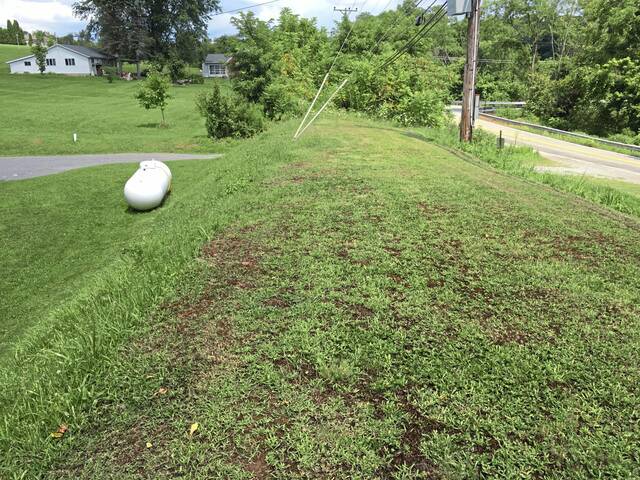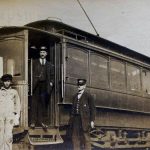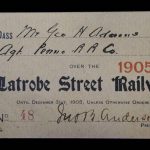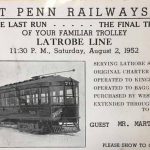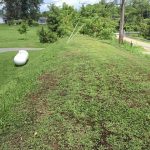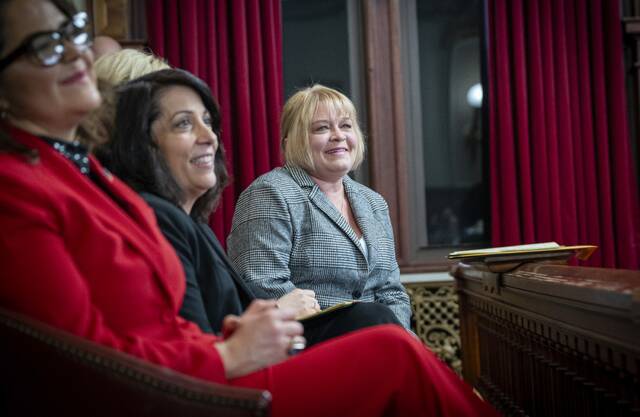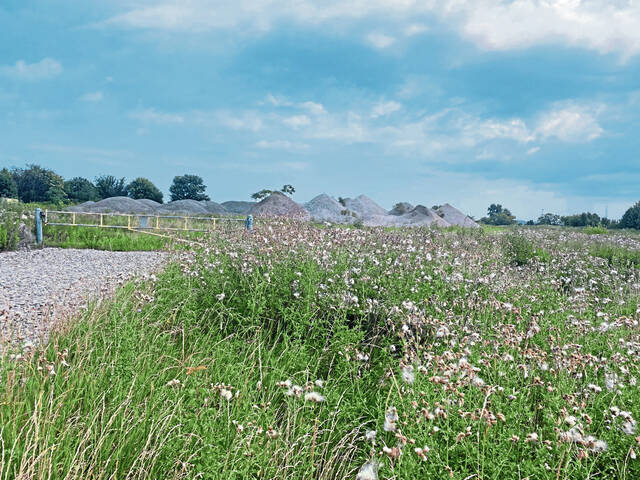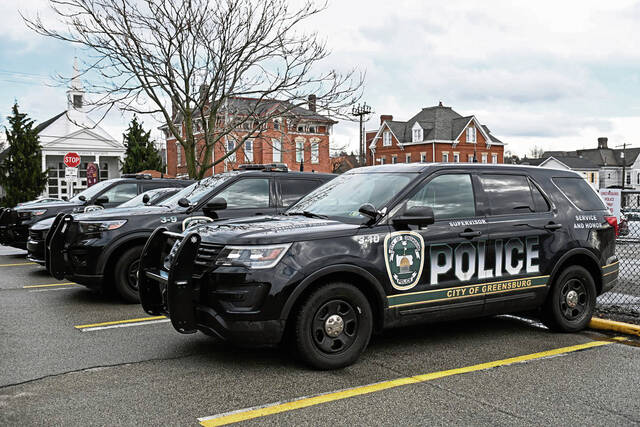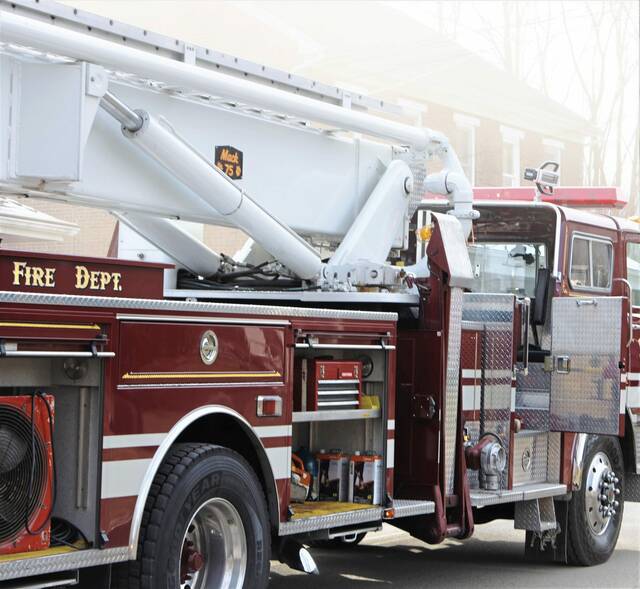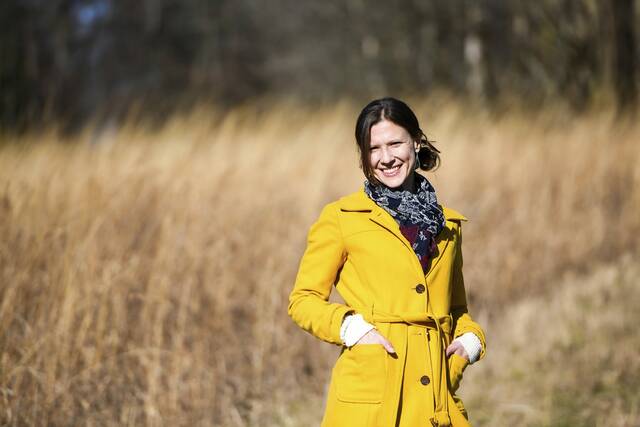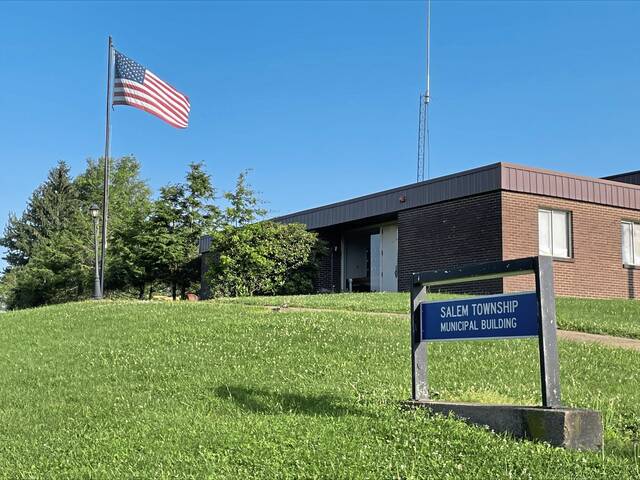Many Westmoreland County residents rely on public buses to get around. Electric-powered trolleys — or streetcars — previously provided that function from the late 19th century through the mid-20th century.
“Greensburg was one of the earliest communities to have this innovative form of mass transport,” Robert Van Atta noted in “A Bicentennial History of the City of Greensburg.” “This was due in large part to the strong industrial, financial and mining leadership among city entrepreneurs.”
The Greensburg & Hempfield Electric Street Railway was chartered Sept. 27, 1889. Among the local investors in the company were coal industry operators Robert S. Jamison and Edward Donohoe, according to Van Atta.
Beginning operations in October 1890, the company ran a 5-mile loop connecting the Pennsylvania Railroad station with streets in Greensburg, Hempfield and the former Bunker Hill Borough. But the line wasn’t a financial success and in 1899 was involved in a trustee sale because of indebtedness.
Other companies formed to provide trolley links from Greensburg to nearby towns.
The Greensburg, Jeannette & Pittsburg Street Railway Co. operated a route from Greensburg to the railroad bridge in Jeannette. Service began in November 1895 and lasted six years.
The Greensburg & Southern Electric Street Railway Co. offered service between Greensburg and South Greensburg and Youngwood, beginning on May 12, 1902.
Through a series of mergers, those local lines and a number of others in outlying communities became part of a regional system. In 1917, 13 trolley companies merged under the West Penn Railways Co. moniker. The system was organized into three operating territories with almost 340 miles of track.
“Electric railway operations in Southwestern Pennsylvania’s rural and urban areas peaked in the World War I era and the immediate post-war period,” Van Atta wrote. “The adverse effect of private automobile competition on West Penn Railways operations was first seriously experienced in 1924.”
The main West Penn route connected Greensburg and Uniontown over more than 30 miles of track, a trip that initially took nearly 2½ hours to complete.
According to a publication issued in 1973 by the Pennsylvania Railway Museum Association, the West Penn system’s trolley destination signs used a color coding system for various routes because of the high degree of English illiteracy among immigrant workers who used the streetcars to get to work in area coal mines.
Getting around Latrobe
In Latrobe, streetcars brought workers to the town’s mills, shoppers to downtown stores and students from Unity to the high school — which most recently served as an elementary school before being purchased as a headquarters building for Robindale Energy Services.
Mary Lou Townsend, president of the Latrobe Area Historical Society, noted the importance of trolleys to local residents through World War II.
“Until after the war, most families had only one car, if any,” she said. “The high school sold monthly passes to students from Unity Township to come into Latrobe on the trolley.”
The Latrobe Street Railway Co. began in 1900, soon extending service south to Youngstown and the Unity villages of Baggaley and Whitney. Purchased by West Penn, it connected to the rest of that larger trolley network at the Mt. Pleasant Township village of Hecla, beginning in about 1914. In later years, trolleys ran hourly over the 14-mile branch between Latrobe and Hecla.
In Latrobe, Townsend said, “There were stops all over town. My grandmother, who lived on James Street in Fourth Ward, could take the trolley and visit her sister in Uniontown.
“People also rode the trolley to get from one end of town to the other.”
Townsend noted one of Latrobe’s former trolley barns still stands, across Ligonier Street from Latrobe’s City Brewery and next to the First Ward playground.
“The first trolley barn was built in 1905,” she said. “It was located on Jefferson Street where the Saint Vincent DePaul store is now. I had the opportunity to go through there before they tore it down. You could still see the tracks.”
‘A boon to Irwin’
A trolley terminal building, used by West Penn Railways and West Penn Power, was constructed in 1927 along Greensburg’s South Main Street, Van Atta noted. The building, acquired by the city in 1954, now serves as City Hall.
Various trolley lines formed connections from Greensburg to Irwin and from Southwest Greensburg to Hunker. A line from Irwin to Trafford was proposed in September 1905 and was constructed soon thereafter. Trolleys completed the 18-mile run from Greensburg to Trafford in 90 minutes.
Local historian Bob Cupp, a Plum resident who lived in North Huntingdon, noted trolley service “was a boon to Irwin. It provided easy access to Irwin from all over Westmoreland County. Irwin was a favorite place to shop.
“From Irwin, you could go to Pittsburgh, McKeesport or Greensburg.”
According to Van Atta, the Irwin-Herminie Traction Co. began service on a 5½-mile line in November 1910 and continued until 1931. It remained independent and never affiliated with the West Penn Railway System, but it did connect with it.
Shoppers rode the trolley to Irwin from Herminie, and a baggage car hauled a large amount of freight. As documented on a 1916 ticket, it cost 25 cents to ship a 5-gallon container of ice cream from Irwin to C&B Drug Co. in Herminie.
In July 1920, the passenger fare between Irwin and Herminie was raised from 18 cents to 25 cents.
According to the archives of the Latrobe Area Historical Society, an independent 7-mile trolley line connected Latrobe to neighboring Derry, operated by the Westmoreland County Railways Co. from the first few years of the 20th century through the early 1930s. Headquartered in Derry, the line had a car barn and generating plant.
Along Route 982 near Bradenville, a ramp lifted the trolleys to a trestle, carrying them above a railroad spur that served nearby coke ovens. In a past interview with the Tribune-Review, Latrobe resident Dorothy Plummer recalled passengers avoided sitting together on the same side of the car.
“When we went over the trestle, we were always afraid the car would jump the track,” she said.
Trolley parks
As a way to attract ridership beyond weekday commuters, many area trolley lines developed parks where customers could head for weekend recreation.
Some of the now-vanished “trolley” parks in the region included Jeannette’s Oakford Park, Olympia Park in McKeesport and Allison Park, between Leechburg and Apollo.
“People could get on a trolley in Herminie and end up at Oakford Park after they changed cars in Irwin,” Cupp said.
Oakford Park opened in 1896. Most of its attractions closed in 1938, but an associated swimming pool remained open into the 1980s.
In a July 18, 1991, interview recorded by the Latrobe Area Historical Society, famed native son and children’s television host Fred Rogers recalled a trolley that ran from Latrobe to Ligonier and Idlewild Park. It took Rogers and other children to school picnics at the park.
Trolley ridership began to decline during the Great Depression but saw a resurgence when the area home front mobilized for World War II. Streetcars were among places where military recruitment posters became a familiar sight.
Eventually, as area communities were connected by more and better roads, trolley riders switched to bus lines or bought cars, and the inflexible routes of the West Penn and other street rail systems gradually shut down.
“After World War II, with the post-war boom, more people bought cars and the trolley ended up being kind of obsolete,” said Townsend.
West Penn Railways saw its last profit, slightly more than $25,000, in 1949. It served its last passengers in 1952.







